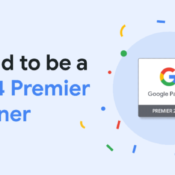/
/
White Paper Wednesday Part III: Succeeding with Social
Well, today marks the final installment of White Paper Wednesday. As a recap, we’ve covered best practices with display and search advertisements. Today, we’re getting social. Social advertising uses the realm of social networks to gather an audience. Here are some do’s and don’ts to keep in mind.
OPT-IN, OPT-OUT
Because personal information is just that, personal, advertisers must build up a level of trust with consumers to combat privacy issues. One way to work around privacy issues is to allow for consumers to opt-in. By giving the consumers control over their personal information, they may be more likely to share or at least have a greater level of respect for the company.
ENGAGE, BUILD RELATIONSHIPS
The goal of social advertising is not to sell, but to build relationships; to be more of a friend than a company. One way this can be done is to create a Facebook page or Twitter account. While posting, make sure to post relevant content that consumers will take interest in, not successful business reports.
DON’T OVER-ENGAGE
Engaging is highly important, but it also takes a proper balance. Over-engaging can cause the audience to be turned off, especially if the content is of no interest to them.
STRENGTHEN CURRENT CONNECTIONS
Consumer endorsement can be significant. When users see their friends have “liked” or tweeted something, it will appear on their news feed and they may be more likely to check into it as well. In being social, a company shouldn’t focus solely on gaining new followers, but on maintaining current admirers and using those connections to further their purposes.
THE POWER OF FACEBOOK
The Facebook Ad: This is the basic display ad which is shown based on the users’ interests. These Facebook ads should not be overlooked and in fact make up about a quarter of display advertising on any site.
 The Facebook Page: Pages allow businesses or organizations to post updates, notes, pictures and more, as well as engage with consumers through wall posts.
Graph API: This allows visitors to bring friends and interests to outside websites. For example, Amazon uses Facebook’s Graph API to recommend products for users based on their interests and their friends’ interests and purchases.
The Facebook Page: Pages allow businesses or organizations to post updates, notes, pictures and more, as well as engage with consumers through wall posts.
Graph API: This allows visitors to bring friends and interests to outside websites. For example, Amazon uses Facebook’s Graph API to recommend products for users based on their interests and their friends’ interests and purchases.
 The Facebook Page: Pages allow businesses or organizations to post updates, notes, pictures and more, as well as engage with consumers through wall posts.
Graph API: This allows visitors to bring friends and interests to outside websites. For example, Amazon uses Facebook’s Graph API to recommend products for users based on their interests and their friends’ interests and purchases.
The Facebook Page: Pages allow businesses or organizations to post updates, notes, pictures and more, as well as engage with consumers through wall posts.
Graph API: This allows visitors to bring friends and interests to outside websites. For example, Amazon uses Facebook’s Graph API to recommend products for users based on their interests and their friends’ interests and purchases. Recent Posts
Mudd Advertising
Let’s leverage!
Mudd Advertising
Politics Schmolitics!
Mudd Advertising
Mudd has been promoted to Google Premier Partner
All Categories
Tags
anonymous website visitor identification
automotive
branding
cable
case study
chevrolet
chevy
data
digital marketing
direct marketing
display
dynamic inventory display
facebook
first party
google
google analytics
google premier partner
internet marketing
local seo
Matthew Moody
media
mobile search
mobile seo
MUDDid
online marketing
online video
organic
organic search
pay per click
political
ppc
promotion
retargeting
search engine marketing
search engine optimization
sem
seo
social advertising
social media
social media marketing
strategy
traditional marketing
traditional media
Volunteer Spotlight
youtube




